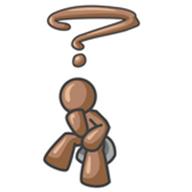 We all have ego. Everyone likes to be right, likes to be seen as intelligent, and likes to be a winner. We all hate to lose, and we hate to be wrong; traders, as a group, tend to be more competitive than the average person. These personality traits are part of what allows a trader to face the market every day—a person without exceptional self-confidence would not be able to operate in the market environment.
We all have ego. Everyone likes to be right, likes to be seen as intelligent, and likes to be a winner. We all hate to lose, and we hate to be wrong; traders, as a group, tend to be more competitive than the average person. These personality traits are part of what allows a trader to face the market every day—a person without exceptional self-confidence would not be able to operate in the market environment.
Like so many things, ego is both a strength and a weakness for traders. When it goes awry, things go badly wrong. Excessive ego can lead traders to the point where they are fighting the market, or where they hold a position at a significant loss because they are convinced the market is wrong. It is not possible to make consistent money fighting the market, so ego must be subjugated to the realities of the marketplace.
One of the big problems is that, for many traders, the need to be right is at least as strong as the drive to make money—many traders find that the pain of being wrong is greater than the pain of losing money. You often have minutes or seconds to evaluate a market and make a snap decision. You know you are making a decision without all the important information, so it would be logical if it were easy to let go of that decision once it was made.
So often, this is not the case because we become invested in the outcome once risk is involved. Avoiding emotional attachment to trading decisions is a key skill of competent trading, and being able to immediately and unemotionally exit a losing trade is a hallmark of a master trader. Being wrong is an inescapable part of trading, and, until you reconcile this fact with your innate need to be right, your success will be limited.
I often suggest that an appropriate way to look at normal trading losses is not as losses at all, but simply as a planned, recurring cost of doing business. Though many traders feel shame, anger, and hurt over losing trades, this is illogical—the market is so random that it is absolutely impossible to trade without losing. Many good traders are wrong far more often than they are right; trading is not about being right or predicting the future. All you can do is to identify places where you might have a small edge in the market, put on the trade, and open yourself to the possible outcomes.
(From The Art and Science of Technical Analysis, 358-359)


Pingback: Appropriate way to look at normal trading losses Trading Wisdoms
Pingback: 10 Sunday Reads | The Big Picture
Not a question of if “you” want to be right .. it’s a question of do you want / need your “chart pattern” to be right. Cognitive dissonance and uncertainty gets magnified as the “gambles” created by the imagined pattern on the “chart” start creating strings of failures after much fought after “gains”. Best to use statistically significant variables derived from computation, robust data samples, and temporally ordered process, rather than using subjectively and visually derived cues that can have many interpretations and permutations.
True… but also try to generalize it… there are plenty of people trading in ways other than chart patterns, so the concept applies to all methodologies or ways of putting on risk in the markets. Thank you for yoru comment!